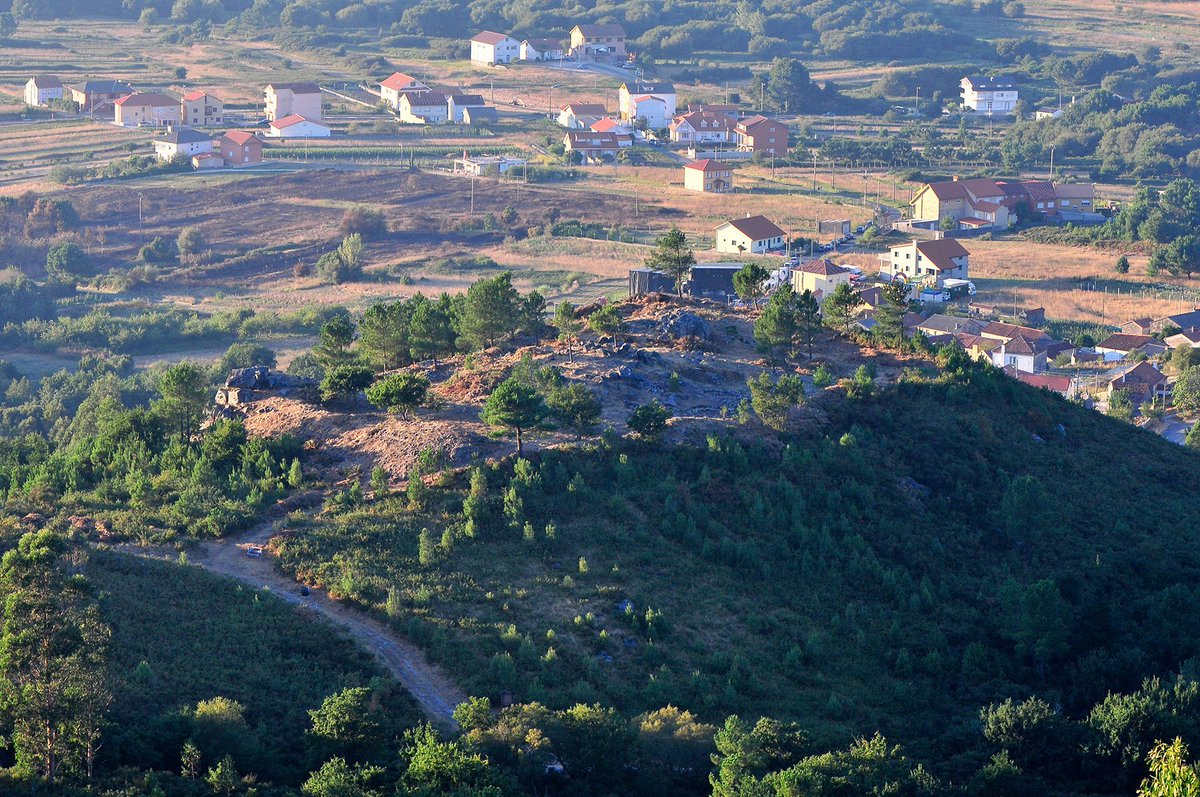
Today in #HillfortsWednesday let me tell you three short stories on community archaeology, based in our work in Mallou hillfort (Carnota, #Galicia), a small and beautiful Late Iron Age settlement with stunning sea views.
📸 Concello de Carnota / Noel Feáns.

📸 Concello de Carnota / Noel Feáns.


Very close to the hillfort, halfway up the hillside all along a circle of mountains, you will find dozens of rock art stations. In the summer sunsets, the old Bronze Age carvings come to life.
(hillfort in the grey square)
#hillfortswednesday

(hillfort in the grey square)
#hillfortswednesday


We planned an archaeological campaign in 2013, led by Anton Malde. At first, we noticed some mistrust from the villagers. Why? They remembered an older dig, organised as a work camp with teenagers. They crossed the village in vans full of young people. #hillfortswednesday 

The problem was that the older neighbours were already familiar with the 'work camps'. Since the civil war, Franco imprisoned many republicans and forced them to work in the quarries. It damaged the relationship with the site.
#HillfortsWednesday
#HillfortsWednesday

We needed a strategy to rebuild the relationship between the community and its hillfort. And we realised that the key was the children. Galicia has the lowest fertility rate in Europe. Children are GOLD.
#HillfortsWednesday
#HillfortsWednesday

In Mallou village everyone remembered the theft of an impressive wild boar stone head statue that some neighbours found in the ramparts of the hillfort in the 50's. They installed it in the centre of the village. In the early 1980s it was stolen.
#HillfortsWednesday
#HillfortsWednesday

So why not involve the children of the village in its reconstruction? Thanks to stonemason Marcos Escudero they started working. The elders explained to the children how they remembered the boar's head.
#HillfortsWednesday

#HillfortsWednesday


It was all about rebirth memories. The children began to ask their grandpas the old legends of the site. Fairies caves, the Wolf Queen Seat, the Rampoña, a terrible harpy. Generations began to bring again the hillfort to the village life.
#HillfortsWednesday
#HillfortsWednesday

We fought against the lost of identity. A retired contractor visited us all days. "There is nothing there!", he warned us laughing. He stole tons of stone in the hillfort years ago. When the first houses appeared, he got surprised.
#HillfortsWednesday
#HillfortsWednesday
He had 80 years old, and decided to clean by himself the wild slopes of the hillfort. It was a kind of compensation."I feel so sorry!", he told me, "all that our elders told to us was true!". The self-hate of rural communities was healing.
#HillfortsWednesday
#HillfortsWednesday
Elders did not came back to the hillfort since they were child. We decided to visit them, door by door, giving them a letter of invitation, like in the Galician weddings. All that old, wise women climbed and enjoyed the party.
And the wild boar returned.
#Hillfortswednesday

And the wild boar returned.
#Hillfortswednesday


Archaeology is not only abouth the past. It's also about the present, the daily life of local people, in how they deal with their own identity and memory. When an archeological site is opened to research, you open also many other doors.
#HillfortsWednesday
📸 José Chazo
#HillfortsWednesday
📸 José Chazo

• • •
Missing some Tweet in this thread? You can try to
force a refresh
























